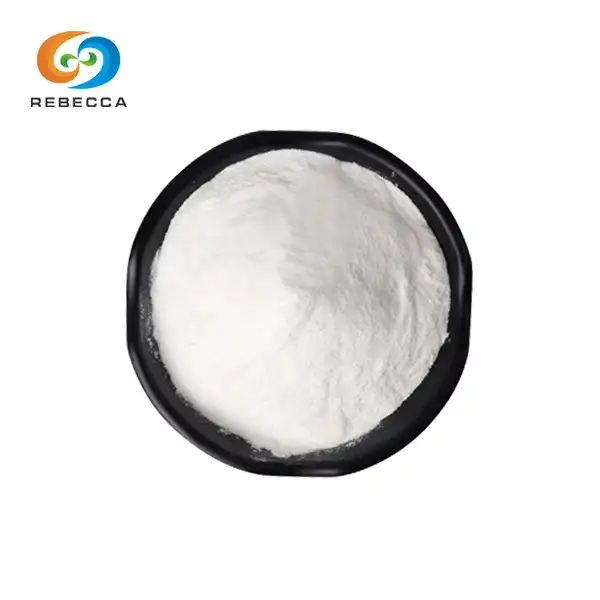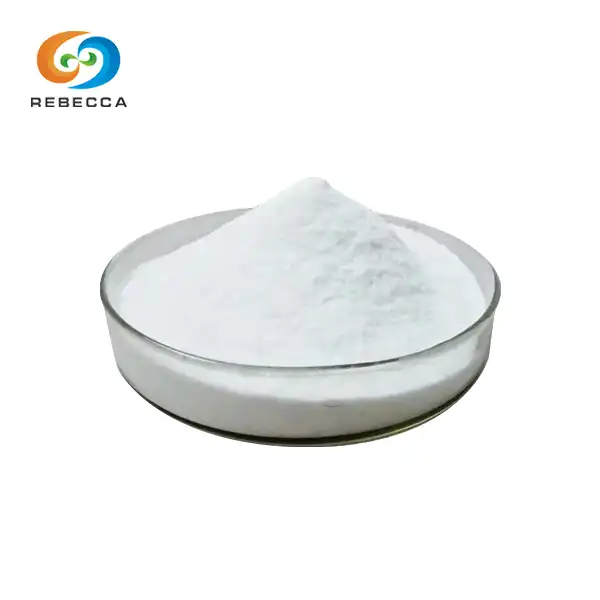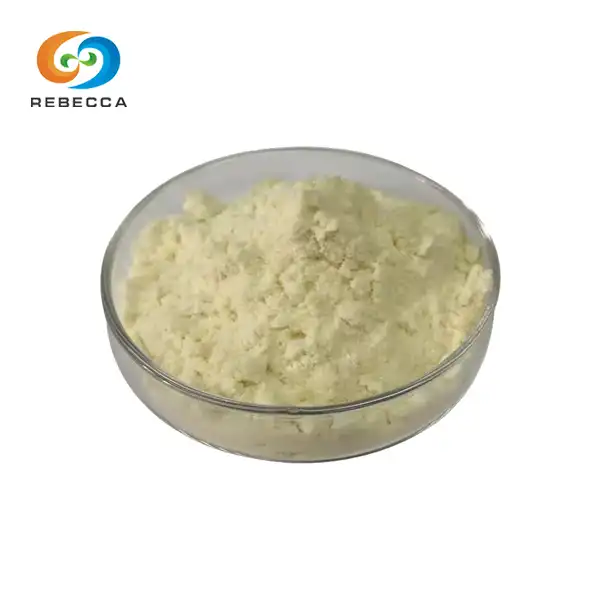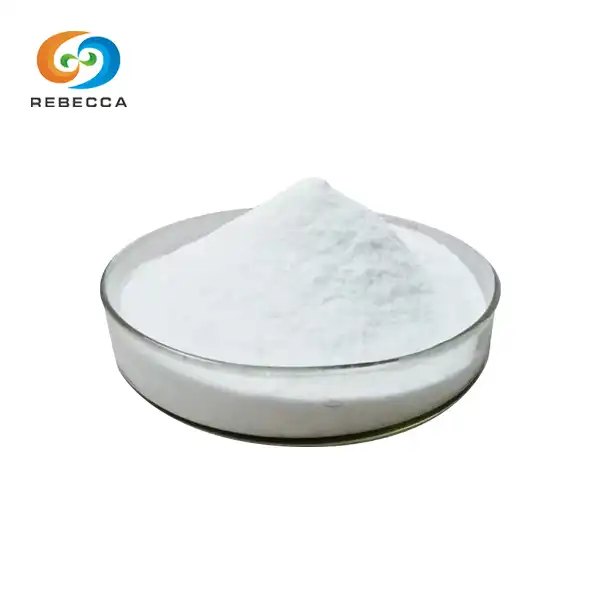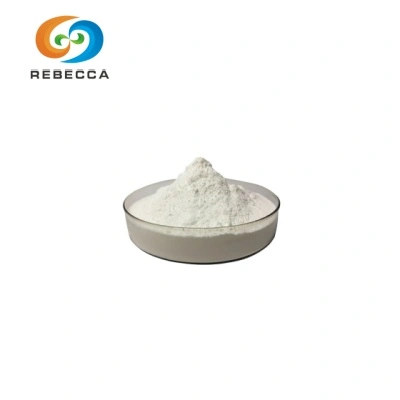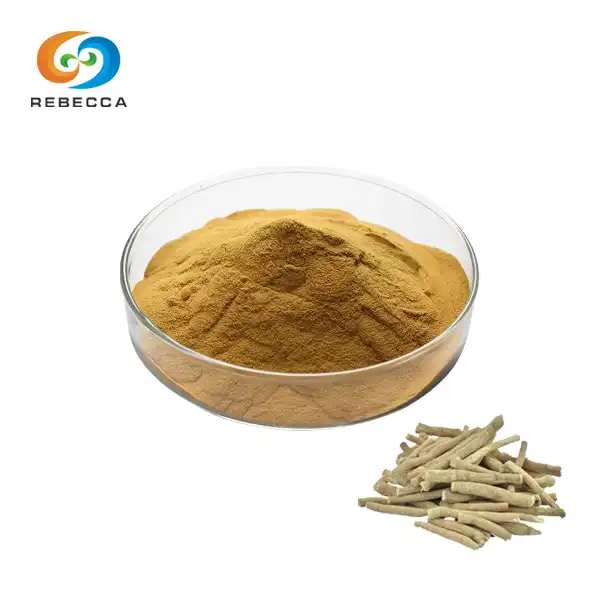Glabridin Extraction Process
Glabridin, a potent flavonoid found in licorice root, has gained significant attention in the skincare and pharmaceutical industries due to its numerous beneficial properties. This powerful compound is known for its skin-brightening, anti-inflammatory, and antioxidant effects. To harness these benefits, manufacturers employ various extraction processes to obtain pure glabridin powder. In this comprehensive guide, we'll explore the sources of glabridin, the intricate extraction methods, and how the quality of extraction impacts its efficacy.
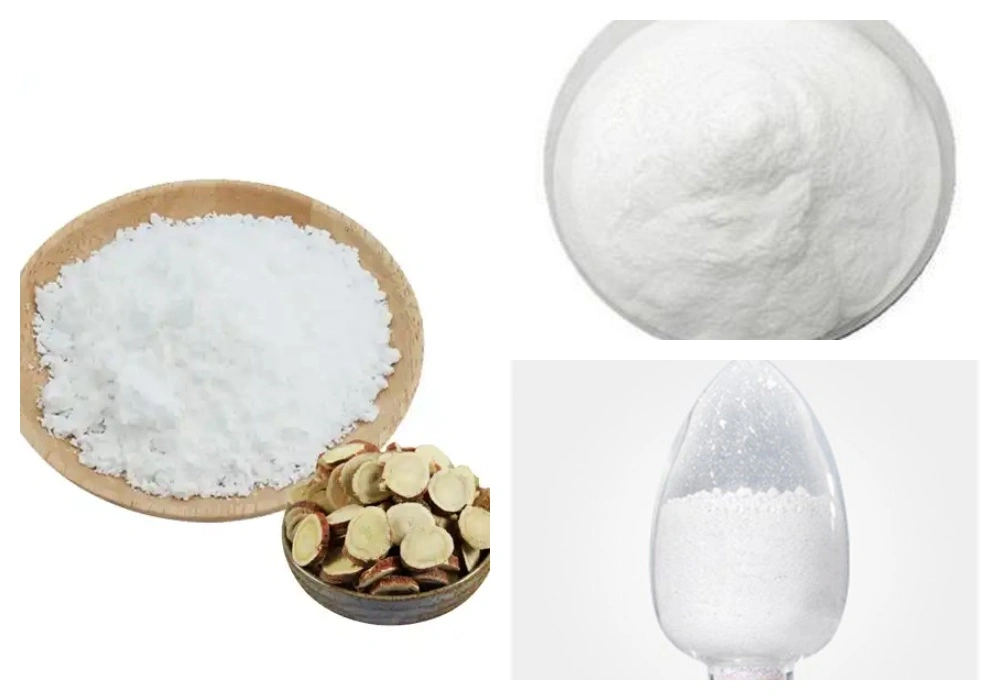
What Are the Common Sources of Glabridin?
Glabridin is primarily derived from the roots of the licorice plant (Glycyrrhiza glabra), which has been used for centuries in traditional medicine across various cultures. While licorice root is the most common and abundant source of glabridin, it's essential to understand that not all licorice species contain the same levels of this valuable compound.
The main sources of glabridin include:
- Glycyrrhiza glabra: This is the most common species of licorice and the primary source of glabridin. It's native to southern Europe and parts of Asia.
- Glycyrrhiza uralensis: Also known as Chinese licorice, this species is widely used in Traditional Chinese Medicine and contains varying amounts of glabridin.
- Glycyrrhiza inflata: This species is found in parts of China and Central Asia and is another potential source of glabridin.
The concentration of glabridin in these sources can vary significantly depending on factors such as:
- Geographical location
- Soil conditions
- Climate
- Harvesting time
- Plant age
These variables underscore the importance of selecting high-quality raw materials for glabridin extract. Reputable manufacturers often work closely with cultivators to ensure optimal growing conditions and harvesting practices, maximizing the glabridin content in the raw materials.
What Are the Steps in Glabridin Extraction?
The extraction of glabridin from licorice root is a complex process that requires precision and expertise. While specific methods may vary among manufacturers, the general steps involved in glabridin extraction are as follows:
1. Raw Material Preparation
The first step in the extraction process involves carefully selecting and preparing the licorice roots. This includes:
- Cleaning the roots to remove dirt and impurities
- Drying the roots to reduce moisture content
- Grinding the dried roots into a fine powder to increase surface area for extraction
2. Solvent Selection
Choosing the right solvent is crucial for efficient glabridin extract. Common solvents used include:
- Ethanol
- Methanol
- Acetone
- Ethyl acetate
The choice of solvent depends on factors such as extraction efficiency, safety considerations, and regulatory compliance.
3. Extraction Process
Several extraction methods can be employed to isolate glabridin from the prepared licorice root powder:
- Maceration: This traditional method involves soaking the powdered root in the chosen solvent for an extended period, allowing the glabridin to dissolve into the solvent.
- Percolation: The solvent is passed through a column filled with the powdered root, extracting the glabridin as it flows through.
- Soxhlet Extraction: This method uses a specialized apparatus to continuously cycle the solvent through the plant material, increasing extraction efficiency.
- Ultrasound-Assisted Extraction: Ultrasonic waves are used to enhance the extraction process, reducing extraction time and improving yield.
- Supercritical Fluid Extraction: This advanced method uses supercritical carbon dioxide as the solvent, offering a clean and efficient extraction process.
4. Filtration and Concentration
After extraction, the resulting solution is filtered to remove any solid particles. The filtered extract is then concentrated using techniques such as:
- Vacuum evaporation
- Rotary evaporation
- Spray drying
These methods help remove the solvent and concentrate the glabridin-rich extract.
5. Purification
To obtain high-purity glabridin, additional purification steps are often necessary. These may include:
- Column Chromatography: The concentrated extract is passed through a column filled with adsorbent material, separating glabridin from other compounds.
- High-Performance Liquid Chromatography (HPLC): This advanced technique offers precise separation and purification of glabridin.
- Recrystallization: The purified glabridin is dissolved in a suitable solvent and recrystallized to further enhance purity.
6. Drying and Packaging
The final step involves drying the purified glabridin to obtain a stable powder form. This is typically done using methods such as:
- Freeze-drying (lyophilization)
- Spray drying
- Vacuum drying
Once dried, the pure glabridin powder is carefully packaged in moisture-resistant containers to maintain its quality and potency.

How Does the Quality of Extraction Affect Glabridin Efficacy?
The quality of the extraction process plays a crucial role in determining the efficacy of the final glabridin product. Several factors can impact the quality and, consequently, the effectiveness of glabridin:
Purity
High-quality extraction methods result in glabridin with greater purity. Purer forms of glabridin are more potent and effective in their applications. Impurities can not only dilute the active compound but may also interfere with its beneficial properties.
Concentration
Efficient extraction techniques can yield higher concentrations of glabridin. More concentrated forms of glabridin may offer enhanced benefits and require smaller quantities for desired effects in various applications.
Stability
The extraction process can affect the stability of glabridin. Proper extraction and handling methods help preserve the compound's molecular structure, ensuring it remains stable and effective over time.
Bioavailability
The extraction method can influence the bioavailability of glabridin. Some techniques may produce forms of glabridin that are more easily absorbed and utilized by the body or skin, enhancing its overall efficacy.
Synergistic Compounds
Depending on the extraction process, other beneficial compounds from licorice root may be co-extracted with glabridin. These compounds can work synergistically with glabridin, potentially enhancing its effects.
Environmental Impact
Sustainable and eco-friendly extraction methods not only produce high-quality glabridin but also contribute to environmental conservation. This aspect is increasingly important for conscientious consumers and businesses.
Batch Consistency
High-quality extraction processes ensure consistency between batches of glabridin. This consistency is crucial for manufacturers who rely on standardized ingredients for their products.
Regulatory Compliance
Extraction methods that adhere to regulatory standards ensure that the resulting glabridin meets safety and quality requirements for use in various industries, including cosmetics and pharmaceuticals.
As research continues to unveil the numerous benefits of glabridin, the demand for this powerful compound is likely to grow. Manufacturers and researchers are continually refining extraction methods to improve yield, purity, and sustainability. For those in the skincare, pharmaceutical, or nutraceutical industries, understanding the intricacies of glabridin extraction is essential for selecting the highest quality ingredients for their products.
Are you interested in incorporating high-quality glabridin into your products? Rebecca Bio-Tech is a leading pure glabridin powder manufacturer, offering stable quality and competitive prices. With an annual production capacity of over 1000kgs, we're equipped to meet your needs. Contact us today at information@sxrebecca.com to request samples, and detailed specifications, or to discuss your custom requirements. Let's work together to bring the benefits of glabridin to your customers!
References:
- Zhang, Q., & Ye, M. (2009). Chemical analysis of the Chinese herbal medicine Gan-Cao (licorice). Journal of Chromatography A, 1216(11), 1954-1969.
- Agarwal, A., Gupta, D., & Yadav, G. (2018). A comprehensive review on the pharmacological activity of Glabridin. Asian Journal of Pharmaceutical and Clinical Research, 11(3), 30-33.
- Simmler, C., Pauli, G. F., & Chen, S. N. (2013). Phytochemistry and biological properties of glabridin. Fitoterapia, 90, 160-184.
- Haraguchi, H. (2001). Antioxidative plant constituents. Bioactive compounds from natural sources: Isolation, characterization and biological properties, 348-352.
- Tao, W., Duan, J., Zhao, R., Li, X., Yan, H., Li, J., ... & Liu, P. (2013). Comparison of three officinal Chinese pharmacopoeia species of Glycyrrhiza based on separation and quantification of triterpene saponins and chemometric analysis. Food chemistry, 141(3), 1681-1689.


